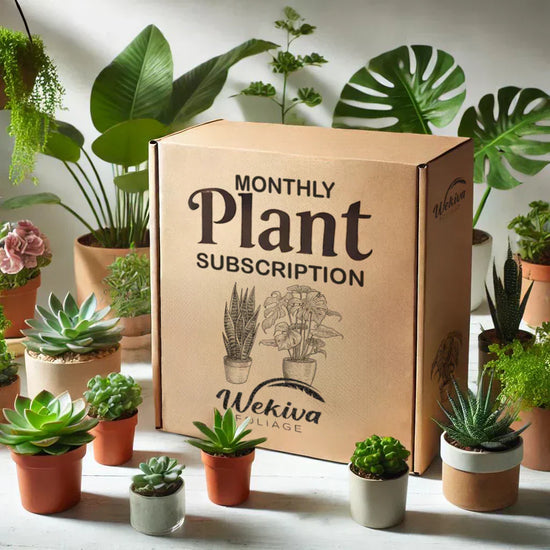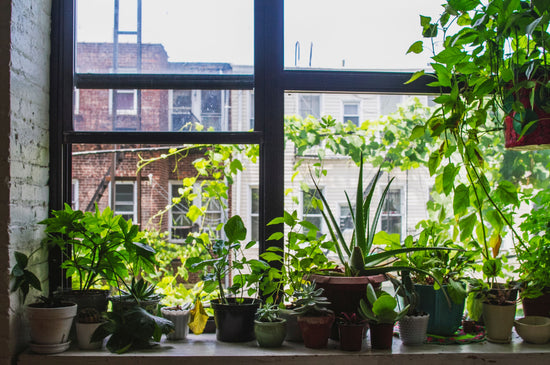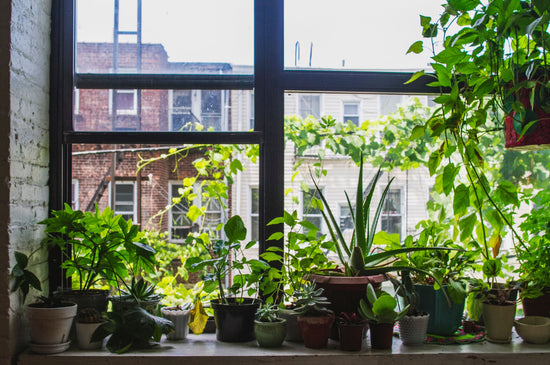The Ultimate Winter Care Checklist for Thriving Houseplants
As winter takes hold, houseplants often face their toughest test. Reduced sunlight, dry indoor air, and fluctuating temperatures can create a less-than-ideal environment for your indoor greenery. However, with the right winter care checklist, you can help your houseplants not only survive but thrive. From the resilient Lifesaver Cactus to lush favorites like the peace lily, here’s everything you need to know to keep your plants healthy and happy throughout the colder months.
Understand the Winter Challenges for Houseplants
Winter introduces several challenges for indoor plants:
- Low Light Levels: Shorter days and cloudy skies limit the sunlight available for photosynthesis.
- Dry Air: Indoor heating systems strip the air of humidity, leaving plants parched.
- Temperature Swings: Drafts from windows and doors, combined with the heat from radiators, can stress plants.
- Reduced Growth: Many plants enter a dormant phase, requiring adjustments to their care routines.
Addressing these issues head-on ensures your indoor garden flourishes even during winter's harshest conditions.
The Essential Winter Care Checklist
1. Light Is Life
In winter, light becomes a precious commodity. Move plants like the zebra-striped succulent and philodendron to the brightest spots in your home, ideally near south-facing windows. If natural light is insufficient, consider investing in LED grow lights to provide supplementary lighting. Rotate plants weekly to ensure even exposure.
2. Adjust Watering Practices
Overwatering is one of the biggest killers of houseplants in winter. Most plants, including the Huernia zebrina, require less water as their growth slows. Allow the top inch of soil to dry out before watering, and always ensure pots have proper drainage to prevent root rot.
3. Boost Humidity Levels
Combat dry indoor air by increasing humidity around your plants. Use a humidifier, group plants together to create a microclimate, or place pots on trays filled with water and pebbles. Tropical plants like the peace lily and zamioculcas plant will especially benefit from added humidity.
4. Maintain a Stable Temperature
Keep your houseplants away from drafty windows, doors, and heat sources like radiators. Most plants thrive in temperatures between 65°F and 75°F. Use thermal curtains or draft stoppers to protect sensitive varieties like the christmas cactus.
5. Dust and Clean Leaves
Dust buildup can block light and reduce a plant’s ability to photosynthesize. Gently clean the leaves of larger plants like the snake plant and pothos with a damp cloth to ensure they can absorb as much light as possible.
6. Inspect for Pests
Winter creates an environment where pests like spider mites and fungus gnats can thrive indoors. Regularly inspect plants, especially those like the spider plant chlorophytum comosum, for signs of infestation. Treat issues with organic insecticidal soap or neem oil and quarantine affected plants.
7. Fertilize Sparingly
Most houseplants enter dormancy in winter, so they require less feeding. Resume regular fertilizing schedules in spring. For plants like the star-shaped flower cactus, a diluted fertilizer every six weeks can help maintain healthy growth without overstimulating them.
8. Plan for Repotting and Pruning
Winter is not the time to repot your plants, as most are in a resting phase. Instead, use this time to plan for spring repotting. Prune dead or yellowing leaves to encourage healthy growth and reduce the risk of pests.
9. Keep an Eye on Growth Patterns
Plants like the pothos epipremnum may slow their growth significantly during winter. This is normal and not a sign of distress. Adjust your expectations and avoid drastic changes to their environment.
10. Monitor and Adapt
No two homes are the same, and plant care can vary depending on your unique environment. Pay close attention to how your plants react to your care routine and make adjustments as needed.
Best Plants for Winter Care
Some houseplants are naturally better suited to winter conditions. Consider adding these low-maintenance options to your collection:
- Snake Plant: Thrives in low light and requires minimal watering.
- ZZ Plant: Drought-tolerant and highly adaptable to various conditions.
- Peace Lily: Prefers indirect light and benefits from higher humidity levels.
- Christmas Cactus: Produces beautiful blooms in winter and tolerates cooler temperatures.
- Spider Plant: Hardy and forgiving, perfect for beginners.
Setting Your Plants Up for Success
Winter care is not just about survival—it’s about ensuring your houseplants are poised for a burst of growth in spring. Regular attention to their light, water, and humidity needs will keep your indoor jungle lush and vibrant.
FAQ
How often should I water houseplants in winter?
Water less frequently during winter. Check the top inch of soil for dryness before watering.
What’s the best way to increase humidity for houseplants?
Use a humidifier, group plants together, or set pots on water-filled pebble trays.
Can houseplants survive in low light during winter?
Some plants, like the snake plant and ZZ plant, tolerate low light well. For others, supplement with grow lights.
Should I fertilize my houseplants in winter?
Most plants don’t need fertilizer in winter due to dormancy. Resume feeding in spring when growth picks up.
How do I prevent pests on houseplants during winter?
Inspect plants regularly for signs of pests and treat infestations promptly with insecticidal soap or neem oil. Keep your plants clean and free of debris.





